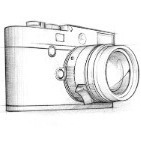Telyt V 280/4.8 version III. Some observations
-
Recently Browsing 0 members
- No registered users viewing this page.
-
Similar Content
-
- 42 replies
- 9,021 views
-
- 5 replies
- 351 views
-
- 6 replies
- 463 views
-
- 3 replies
- 436 views
-
- 9 replies
- 440 views
-




Recommended Posts
Join the conversation
You can post now and register later. If you have an account, sign in now to post with your account.
Note: Your post will require moderator approval before it will be visible.